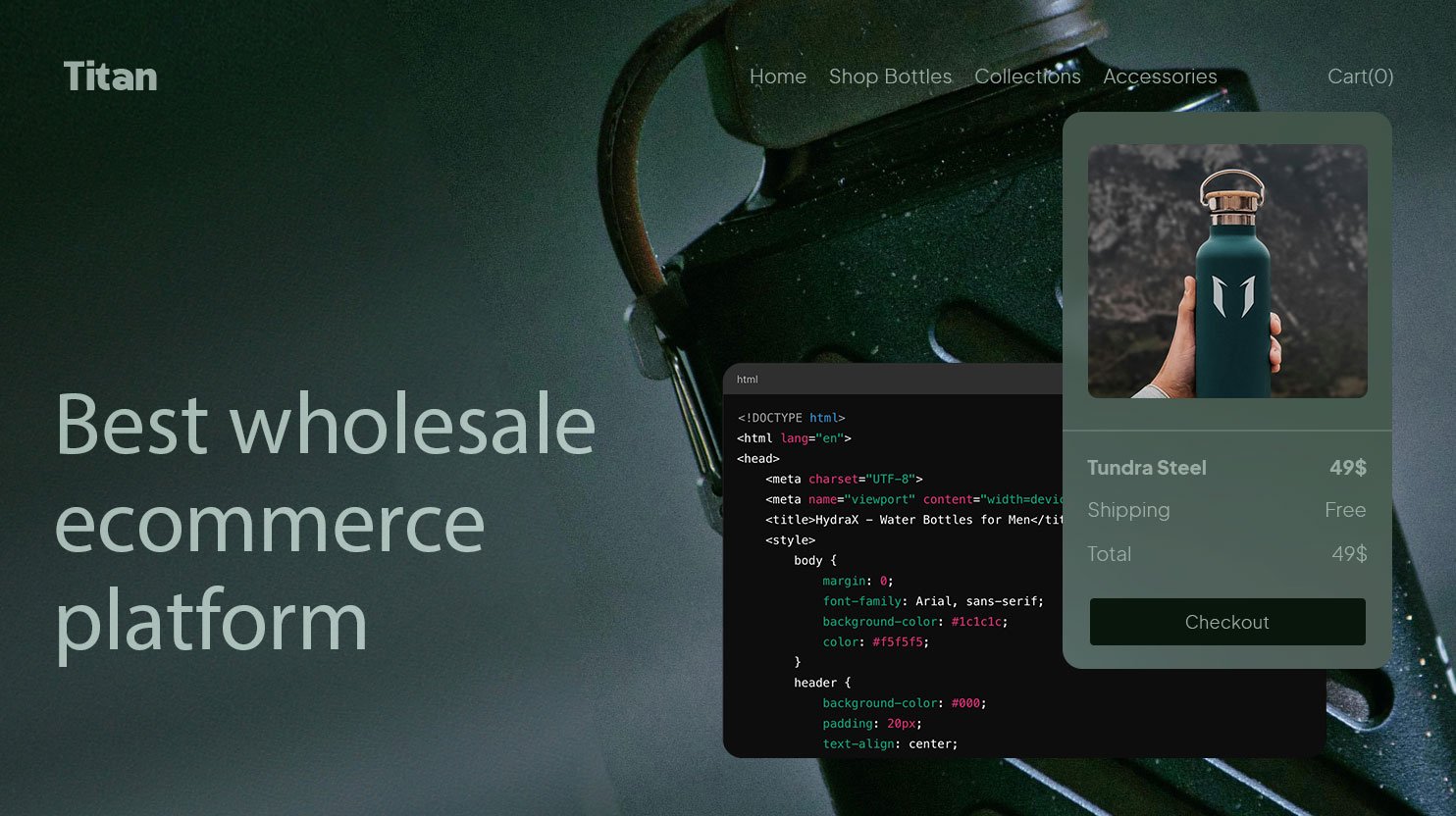In simpler times, a market was a physical venue you went to with your tangible products to sell to an interested buyer. Anything from a flea market to a mall would be a good example.
Today, a market is a complex cross-section of people, systems, organizations, and relationships that are involved in the exchange of a product/service for a direct or indirect financial resource.
Modern markets include dozens of interconnected factors like intent-based marketing, social media influencers, the app marketplace (like Apple App Store or Google Play Store), the competitive landscape and more.
Breaking into such a sophisticated market needs a comprehensive go-to-market strategy. In this blog post, we explore what that is and how you can create one for your organization.
How to Create a Go-To-Market (GTM) Strategy
What is a Go-to-Market Strategy?
A go-to-market (GTM) strategy is a comprehensive documentation of the approach, plans, and implementation processes for bringing a new product or service to market. A robust GTM strategy contains a clear understanding of:
- Prospective customers: Who they are, what they need, and why they’d buy
- Competitive landscape: What products and services exist that solve problems similar to the ones you’re solving
- Promotions: How to position your offering and differentiate it from competitors
- Messaging: What is the language, imagery, tone, voice, and style that represents your brand
- Systems: What are the tools and frameworks that would help monitor performance or automate processes
- Metrics: How to measure success
Why do we need a go-to-market strategy?
In essence, a go-to-market strategy is a growth team’s roadmap toward their North Star, i.e., leads, conversions, and eventually sales. However, a good GTM offers several more benefits than that.
Clarity
A GTM strategy offers everyone on the team clarity of the marketing roadmap, goals, approach, and expectations. This is especially useful in large teams where communication gaps might occur.
Knowledge
A good GTM strategy is a study of the current state. It records detailed observations about the audience, market, competition, gaps, possibilities, risks, and more. This can be a great resource to guide business strategy too.
Data-focus
GTM strategy, especially for digital products and services, relies heavily on data. For example, you might look at past performance to allocate the most budgets for the best converting channels. This not only reduces cost but also improves overall efficiency.
Adaptability
All said and done, a GTM strategy is built on reasonable assumptions and observations. So, it can go wrong. A good GTM strategy makes place for these mistakes and imbibes adaptability into the process.
Repeatability
Once you design a GTM strategy, you can use that as a template for future launches, reducing marketing overheads.
When do we need a GTM strategy?
Organizations use go-to-market strategies when the product/service is new or the market is new. This means that GTM works best in three scenarios.
- New product in new market: For example, the launch of ChatGPT for the consumer market
- New product in existing market: For example, Google adding Gemini to their Workspace product suite
- Existing product in new market: For example, Uber launching in different cities/countries
Who needs GTM strategies?
Anyone taking a new product to market or an existing product to a new market needs a GTM strategy. This typically includes:
- Startups: Launching a new product or shipping significant upgrades to existing ones
- Small businesses: Even if you’re running a bakery around town, a good GTM strategy can help you overshoot the sales goals of your special Christmas cakes
- Enterprises: The biggies, like Microsoft and Apple, spend significant time on building GTM strategies to ensure they predict and mitigate the (big) risks of failure
How is a GTM strategy different from a marketing plan?
In the world of marketing, every team makes several plans and creates various systems. A GTM strategy and a marketing plan are two important tools that growth teams use. Here are the differences between them.
| Go-to-market strategy | Marketing plan | |
|---|---|---|
| Purpose | Taking a new product or service to the market | Marketing existing products or services |
| Approach | Strategic and high-level | Action plan at the implementation level |
| Applicable to | A specific product/service launch | Ongoing business operations |
| Timeline | Shorter, like a sprint | Long-term, like a marathon |
| Involves | Sales, product, and marketing teams | Mostly just the marketing teams |
It is important to note that there will always be overlaps. Some parts of the strategy will be in the plan and vice versa. So, understand these concepts holistically, but don’t fret too much over the details. Every GTM strategy is different.
Steps to Building a Successful Go-to-Market Strategy
A go-to-market strategy is a combination of a large number of factors. This means that you can create infinite versions of your GTM strategy. So, the goal here isn’t to get the ‘perfect’ GTM strategy but the one best suited to your needs.
Below is a framework that can help you create your strategy, considering all the necessary building blocks, and boosted by the operational efficiencies of a strategic planning software like .
1. Identify the problem you’re solving
When we say problem, we don’t just mean a pain point. I can be an opportunity or additional value. Let’s see the difference with examples.
- Problem: 3M wall hooks solve the problem of hanging pictures without damaging the walls with nails
- Opportunity: Play-doh taps into the opportunity of providing colorful and safe play toys for children
- Value: A luxury fountain pen offers prestige and bragging rights
With your product/service, you can offer any of the above. In fact, the opportunity of Play-doh also solves the problem of mothers who worry about their children’s screen time.
Before you get into building your go-to-market strategy, identify the problem you’re solving in as granular detail as possible.
This stage might require multiple conversations and debates with your product and growth teams. Don’t just talk in the air. Use a tool like Whiteboards to brainstorm all the ideas that come up. You can organize and convert them into tasks later, but first, capture everything on a single digital canvas.

2. Define your target audience
Ever heard a business owner claim that their product is for everyone? There is no bigger mistake than that!
As a business owner, you can’t prevent anyone from using your product. That doesn’t mean you have to create it for and sell it to everyone. The most important step to marketing success is defining your niche.
Who is your customer?
Document the ideal customer’s demographic and psychographic attributes. Things to include:
- What’s their age/gender?
- Where do they live?
- What’s their educational background?
- What’s their yearly income?
- What kind of habits/interests do they have?
Remember that you can have more than one ideal customer persona (ICP).
For instance, if you’re an e-commerce marketplace, your customers are both buyers and sellers. If you’re building an online productivity platform, you might sell to both small business and enterprise customers.
While you shouldn’t restrict yourself to one persona alone, don’t have too many that your messages and targeting become chaotic.
What is their problem?
Once you’ve narrowed down the ideal customer persona, identify their problems in detail. At this stage, think of three things:
❓Problem: Define the problem. For example, they need to remember multiple passwords for all their login access.
❗️Impact: How the problem impacts their life. For example, forgetting passwords and resetting them over and over. Or setting insecure passwords.
🎯 Current solution: What are they doing to solve the problem today? For example, writing down passwords in a notepad or storing them on their phone notes app.
Looking at the customer problem in such detail can be insightful. For instance, you might learn that they like to store the passwords on their phone, because it’s always on them. This means that your product certainly needs a mobile app.
One of the best ways to do this is with surveys. Create Forms with your questionnaire and send it to a small sample of potential customers. Look through their feedback to understand them better.


What is their ability and willingness to pay?
There are several problems that customers would rather be inconvenienced by than pay to solve. Then, there is also the matter of perceived incremental value.
For example, there are writing instruments priced at 10 for a dollar. And there are limited edition fountain pens that cost $1000. Both write. If you’re selling the latter, you need to find an audience with the ability and willingness to pay for it.
3. Research the market and your competition
To design a strategy that works in the market, you need to understand said market first. So, let’s begin with thorough market research.
- Market size: How big is the market?
- Market potential: What is the growth potential of the market? What would the next 15-20 years look like?
- Risks: What are the financial, regulatory, or competitive risks associated with this market? Are there any new technologies on the horizon that make your product moot?
From there, narrow down to the competition. Remember that competition doesn’t only mean those who offer products similar to yours. It is everything that the target customers use to solve their problem.
For example, if you’re building a calendar app, your new market might come from those who use paper planners, which is your competition too!
Ask yourself:
- Who solves the problem you’re looking to solve?
- What features do they offer, and how much does it overlap with your product?
- Who is their target audience?
- What is the competitor’s price point?
Docs is a great way to document this research and share with your team. If multiple team members are working on various aspects of the research, Docs allows you to collaborate on the same page—make edits, offer comments, add inputs, etc.


4. Choose your key messaging
Now that you know the customer and the market, it’s time to create a marketing communication strategy that attracts, influences, and persuades them. To do this, consider the following factors.
Personas
If you have multiple ICPs, create a plan that includes messaging for each of them independently. For example, in an e-commerce marketplace, the messaging for sellers can be “reach a larger audience” or “sell for free.” On the other hand, the messaging for buyers would be “discover handmade products” or “buy local.”
Value
While creating your message, consider the value you’re offering the customer. Think beyond features and benefits.
For instance, a feature might be adding products to wishlist. Benefit is ease of planning your shopping experience. The value of this could be supporting a mindful and minimalist lifestyle where you spend money thoughtfully.
Multimedia elements
Good marketing campaign management combines text, typography, visuals, videos, and more. So, consider the holistic message your prospective customer receives, not just the tagline or the heading.
5. Map the buyer’s journey
This is the part of your strategy where marketing and sales come together. Typically, organizations use the traditional sales funnel model or the more modern marketing flywheel.
Irrespective of the model you choose, a buyer’s journey is the steps that a customer crosses as part of their purchase process with you. Not every customer needs to go through all of these steps.
Yet, the most common stages in the buyer’s journey and the corresponding tactics and marketing channels are as follows.
Awareness
At this stage, customers are attracted to your brand and products and want to learn more about you.
- GTM tactics: Lead generation and content marketing with educational material, such as blogs, videos, ebooks, frameworks, etc.
- GTM channels: Search engine optimization, search advertising, social media advertising
Consideration
Here, customers are exploring your products as a way to solve their problems.
- GTM tactics: Content like product reviews, case studies, comparison pages
- GTM channels: Social media engagement, email marketing, lead nurturing, conversion rate optimization, and try-before-you-buy activities like free trials or custom demos
Community
At this stage, customers might seek validation from communities that already use your product. They are ensuring you are a credible and trustworthy business.
- GTM tactics: Community engagement online on platforms such as Reddit, online and offline events, webinars, etc.
- GTM channels: Social platforms, partnerships, industry collaborations
Purchase
Here, they buy your product and start using it. If you’re building a subscription-based tool, a customer is in somewhat of a purchase stage throughout their journey. Each renewal can become a purchase decision, especially if disrupted by a better product in the market.
- GTM tactics: Streamlined purchase workflow, clear call-to-action, referral codes, discounts, offers
- GTM channels: Email marketing, retargeting, personalized campaigns
Loyalty and advocacy
During these phases, the customer is happy, willing to remain loyal and recommend your product to other users.
- GTM tactics: Loyalty programs, referral discounts, recognition programs
- GTM channels: In-app communication, email, account-based marketing
A good go-to-market strategy will integrate marketing efforts into every step of this funnel to boost effectiveness.
By now, you’ve collected all the pieces of your GTM jigsaw puzzle. Now, it’s time to put them all together into the big picture.
6. Create your sales plan
Based on all the knowledge you’ve gained from the above steps, make a comprehensive go-to-market plan for sales that includes the following.
Pricing
How much are you charging, and what is your pricing strategy? For instance, SaaS marketing strategies include pricing on an ad-supported free model, freemium model, monthly/yearly subscription model. Each has its own pros and cons. Choose one that works best for your market.
Marketing
Choose the right channels for the right stage in your buyer’s journey. Optimize the messaging that works best for each persona type. Ensure each channel supports the other to create a compound impact.
For example, at the time of product launch, you might use influencers to create awareness. Use content from those influencer videos to retarget and engage customers at various points in their lifecycle.
Branding
Depending on what you’re creating your GTM strategy for, branding can differ. For example, if you’re launching a new product, you might consider logo, design, color, language, etc.
On the other hand, if you’re taking an existing product to a new market, your core brand would already be decided. You might only have the space to make minor changes to customize for the new market’s needs.
Sales strategy
Are you using inside sales where reps sell/demo remotely, or are you going to build a sales team? You might also create self-serve models without any sales rep involved, if the product is simple enough and priced pretty low.
7. Set goals and metrics
How would you know if your GTM strategy was a success or not? By setting the right goals and their corresponding metrics. Use a good marketing planning software to set sales and marketing KPIs such as follows.
Sales goals
- Total revenue earned
- Conversion rate from lead to customer
- Customer acquisition cost
- ROI on customer acquisition
Marketing goals
- No. of sales qualified leads generated
- % of sales qualified leads among all leads
- Cost of lead generation
Don’t just set these goals. Make them accessible and visible to every member of your team with Goals. Set numerical, monetary, or task targets. Group them into folders and automatically visualize progress. Visualize your goals and track them in real time.


8. Operationalize your GTM strategy
Congratulations. If you’ve come this far, you have a good go-to-market strategy. However, a strategy is only as good as its implementation. To ensure that your entire team is working in tandem toward the same goal, operationalize it.
Think about the implementation of your GTM strategy
Create a single space to manage all aspects of your go-to-market activities. ’s Go to Market Strategy template is designed to help you with that. This beginner-friendly template breaks down the entire process into small bite-sized elements that you can plan, delegate, and execute efficiently.
Write clear SOPs
Document the standard operating procedures (SOPs) for your GTM strategy and marketing planning process. This can be as simple as a style guide for your content or as complex as influencer contracts. Write them down and share them with relevant stakeholders. Docs enables this and more.
Create a GTM project management framework
Create tasks, assign them to users, set deadlines, and mark dependencies on a project management tool like . This will help you streamline activities, create visibility, and prevent any loss of information.
What’s more, you can duplicate this framework at the click of a button, creating repeatability in your processes.
If you don’t want to create your own framework from scratch, try ’s Go to Market Strategy Template. It provides you with a step-by-step approach to design your strategy and implement it effortlessly.
Communicate with your team
A lot can be lost in communication. Especially in go-to-market initiatives where there are several unknowns and many moving parts, a small miscommunication can make things go awry.
Set up systems and processes for communication. Chat is designed to streamline all internal communication, while keeping every message in context. With Chat, keep conversations parallel to your Workspace structure, tag users, tag tasks, convert a message into a task, and more


Too many messages? No sweat. Ask Brain to catch you up and get instant updates on any topic.
If you need a framework to get you started, try ’s Go To Market Strategy Communication Template. Use it to succinctly communicate your goals, roles, responsibilities, and metrics with everyone on the team.
Integrate and consolidate
Lastly, you might be using other marketing tools as part of your GTM stack.
- Use HubSpot? Automate 20+ actions with to streamline your workflows
- Keep your creatives in Google Drive? Integrate it to search and attach files to without clicking out
- Use Miro as your whiteboard? Embed it into for simpler collaboration
Go to Market Confidently with
Modern marketing is complex. Each marketing team uses a dozen channels every day. Across text, visuals, podcasts, and videos, they work with multiple content formats. Given the digital footprint of marketing these days, they collect large volumes and variety of data.
On the other hand, the barrier to entry in digital tools is low. As a result, there are hundreds of tools for every need.
In fact, according to G2, there are 230+ AI chatbots, 460+ project management tools, and 100+ whiteboard apps.
Any category you choose to build in is already most likely crowded. To differentiate yourself, attract an audience base, sell, and retain customers, you need a comprehensive marketing strategy as well as the ability to implement it effectively.
for marketing teams is designed to be exactly that! Brainstorm ideas, build campaigns, manage tasks, track metrics, collaborate, and move as one team with .
Try for free today.


Everything you need to stay organized and get work done.











%20Abstract%20Background%20112024%20SOURCE%20State%20Bags.jpg)



